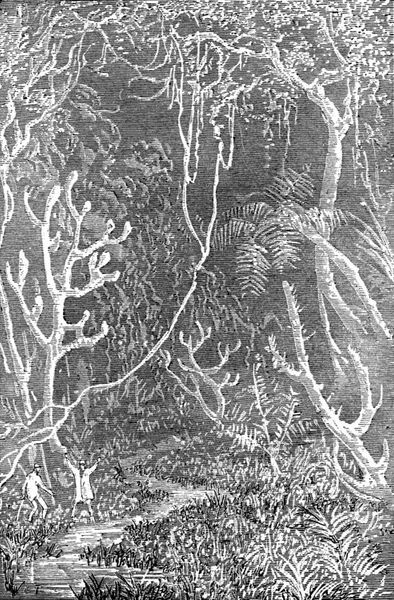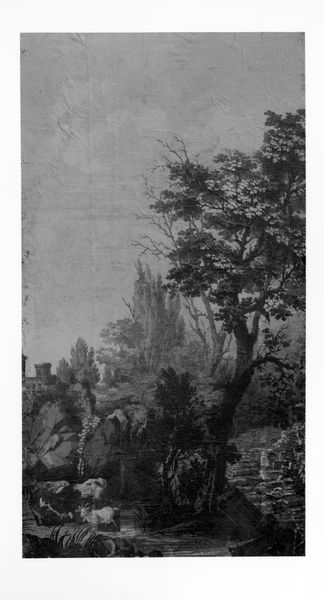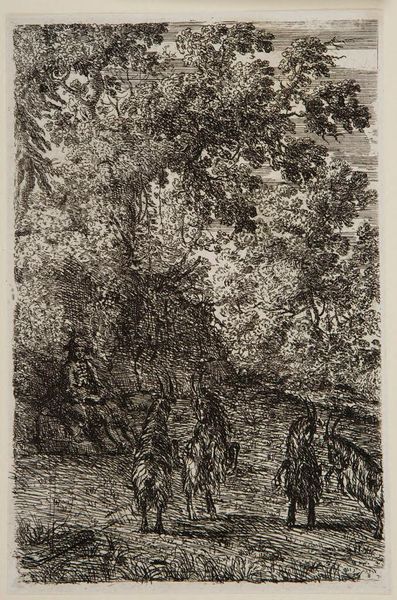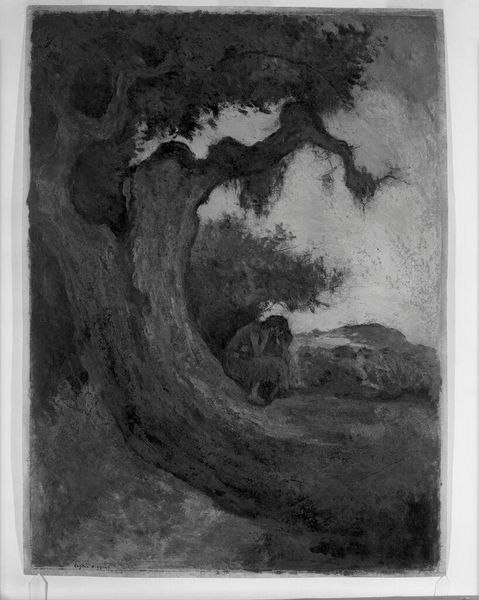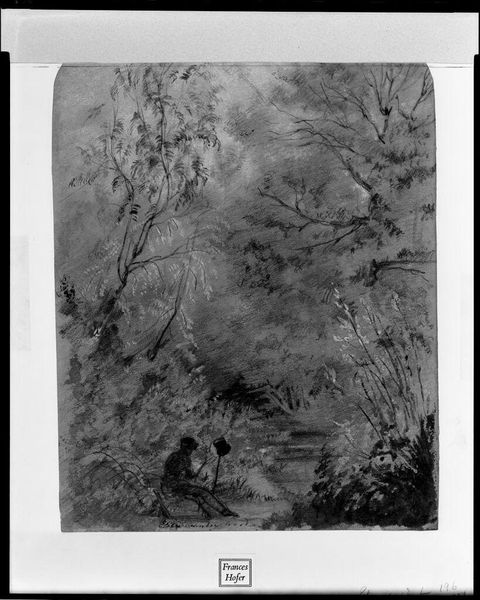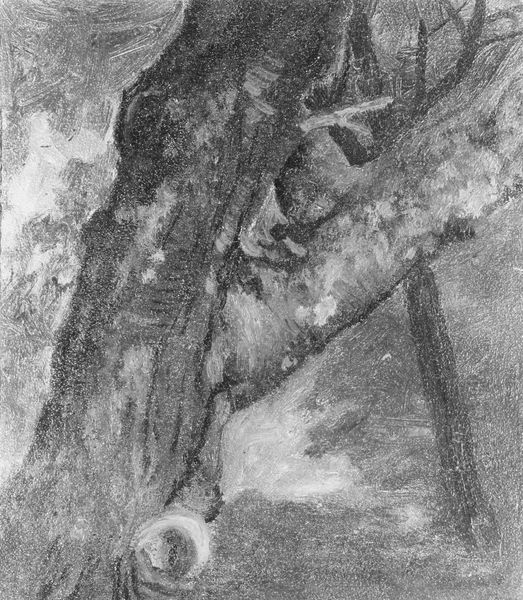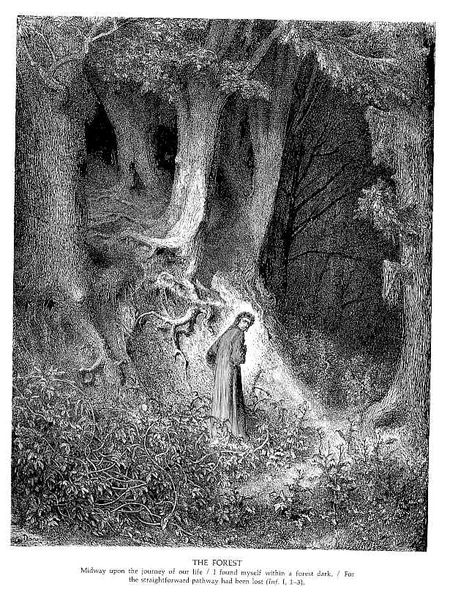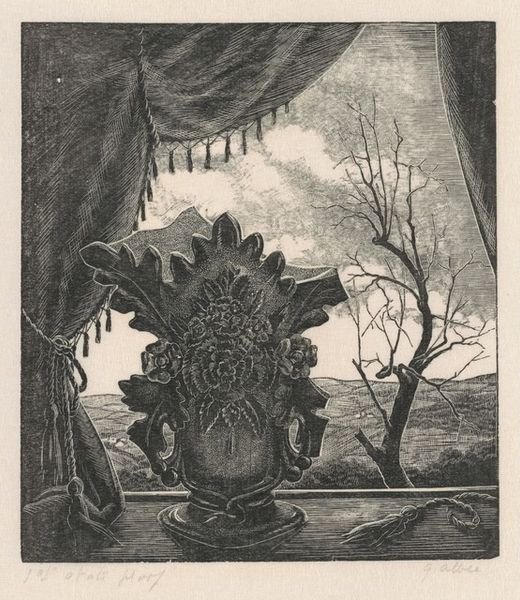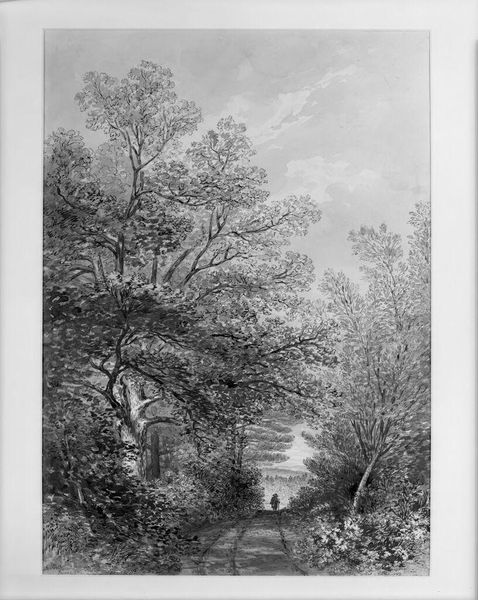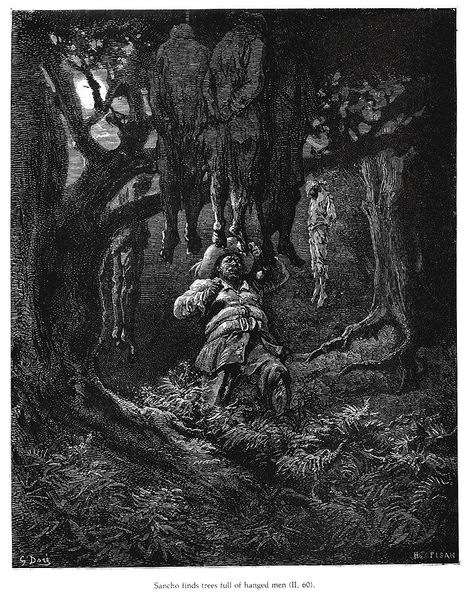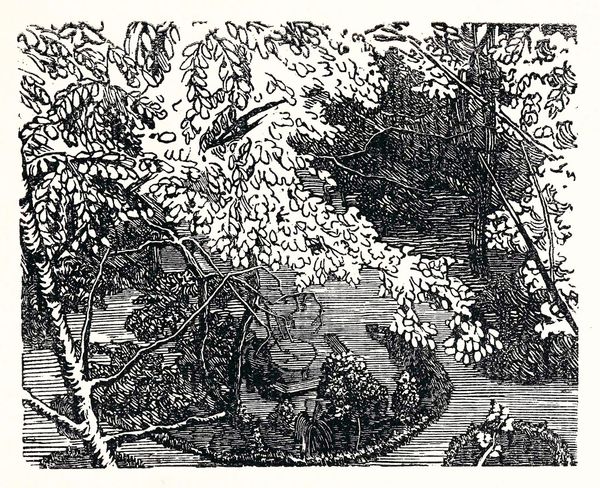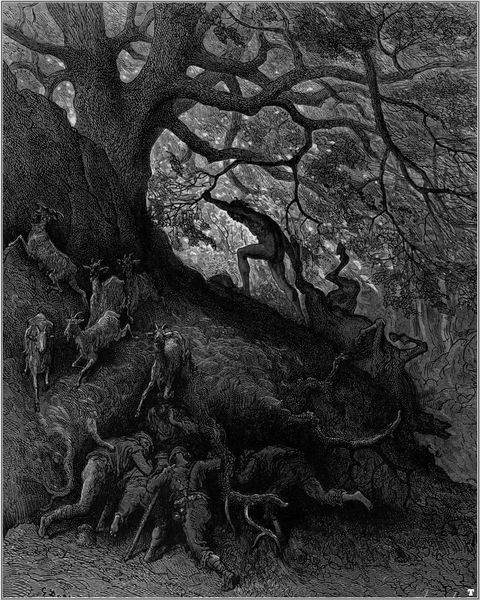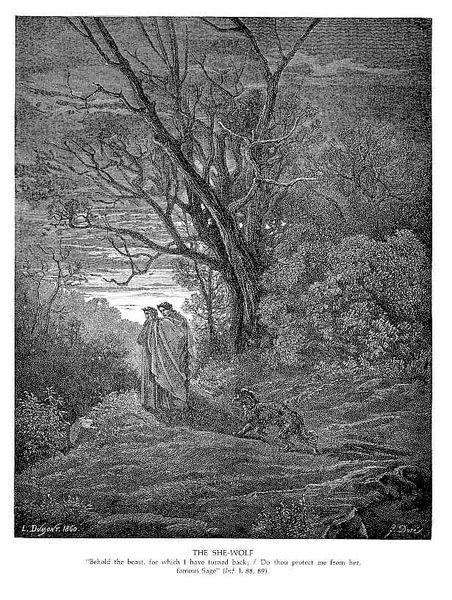
Copyright: Public domain
Curator: The density of the medium really sets the tone in this piece; it's predominantly charcoal and graphite. Quite somber. Editor: It is. I find the weight of grief almost palpable. This drawing, "Kaulbach's Grave on the Early Morning of April 11th," completed in 1874 by Wilhelm von Kaulbach, commemorates a specific moment in Munich's cultural landscape. Curator: So it's documenting the act of collective mourning? Tell me more about the making of it—it seems a kind of material act of witnessing as well as remembering? Editor: Indeed. Kaulbach was a hugely significant artist and director of the Munich Academy. Consider the socio-political implications of this very public display of grief. It's interesting how art intersects with societal rituals surrounding death, and shapes public memory. We're seeing wreaths, crafted and carefully laid, evidence of labour, industry and sentiment, combined to literally ‘dress’ a grave. Curator: You know, looking closer, there's a definite compositional strategy here. All those crafted flower wreaths...the texture becomes a real, physical, visual stand-in for grief itself. Editor: And not just grief, but also a demonstration of public adoration and social responsibility. Von Kaulbach had a powerful place in the Munich cultural sphere. Funerals were grand, politically-laden events. Curator: And consider the medium. The accessible nature of charcoal and graphite speaks to wider dissemination through printmaking, potentially enabling access and impact well beyond the grave itself. The drawing is not simply representing a funeral, it's part of it. Editor: Precisely. The proliferation of imagery played a crucial role in shaping perceptions, not just of Kaulbach, but the Romantic movement at the time. And let’s not forget the site – landscape playing a very conscious part of memorialisation. The graveyard in contrast to the town behind...a deliberate positioning to comment on life and death, past and present. Curator: Well, I must admit, seeing the weight of all that charcoal, I appreciate anew the physical presence of the grief he memorializes, however consciously he framed that representation. Editor: Ultimately, "Kaulbach's Grave" presents a unique window into the intertwined nature of art, ritual, and collective memory in 19th-century Munich.
Comments
No comments
Be the first to comment and join the conversation on the ultimate creative platform.
